Philadelphians are known for embracing their history while defining the cutting edge. As a long-standing jewel of the skyline, 123 South Broad Street is a unique architectural landmark conveniently situated in the heart of center city with transit, restaurants, shopping, the arts all just steps away.
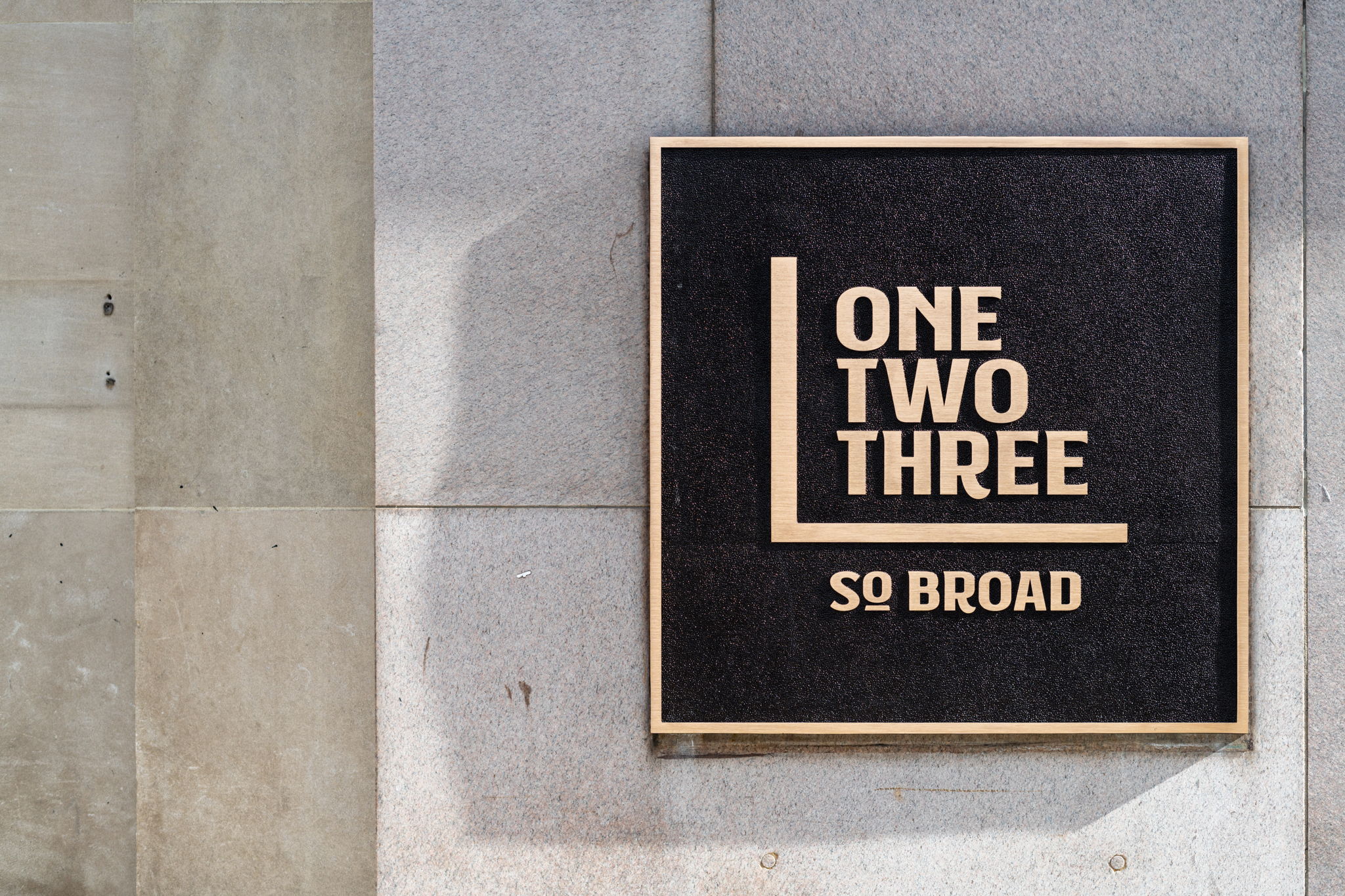
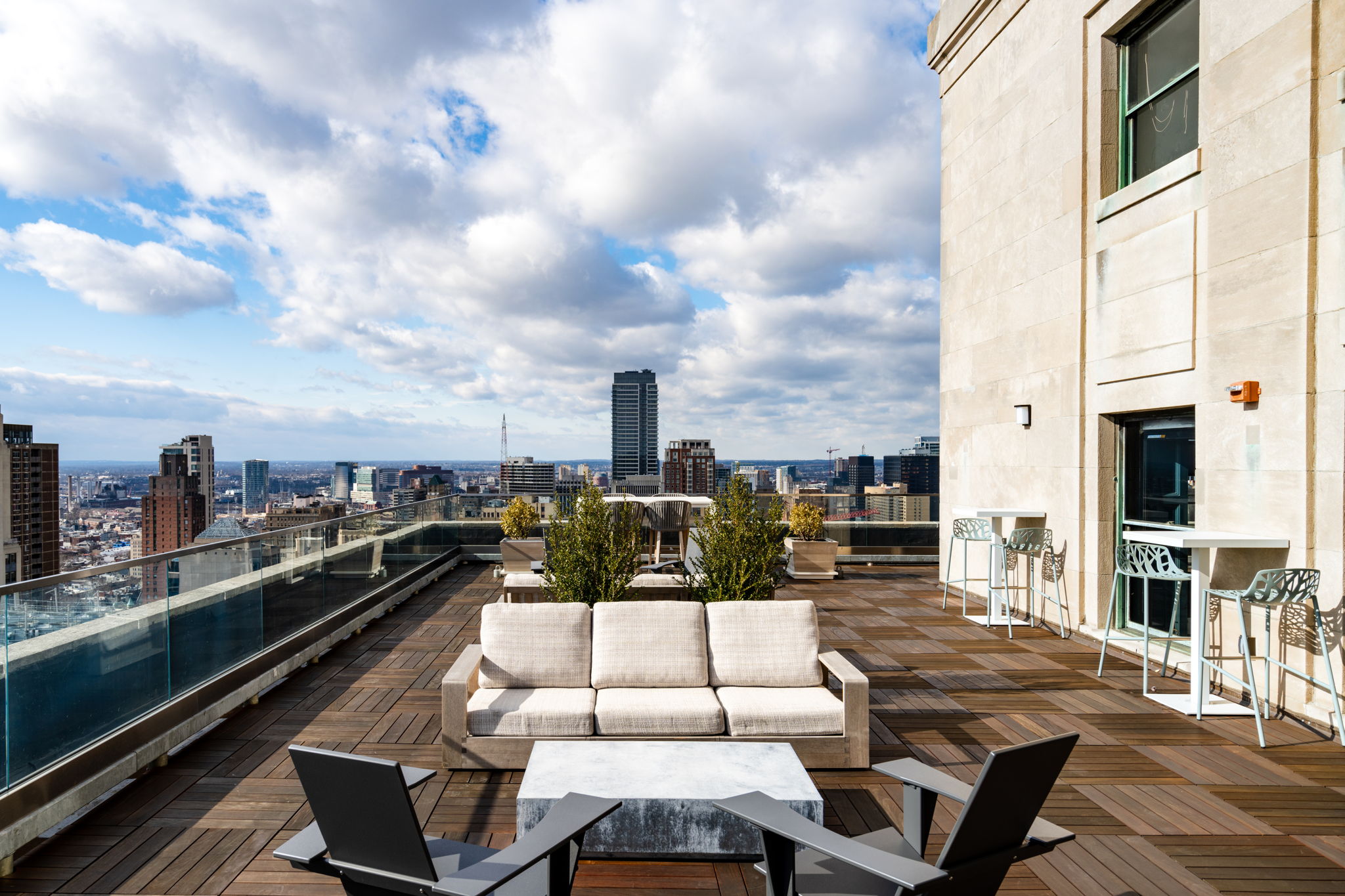
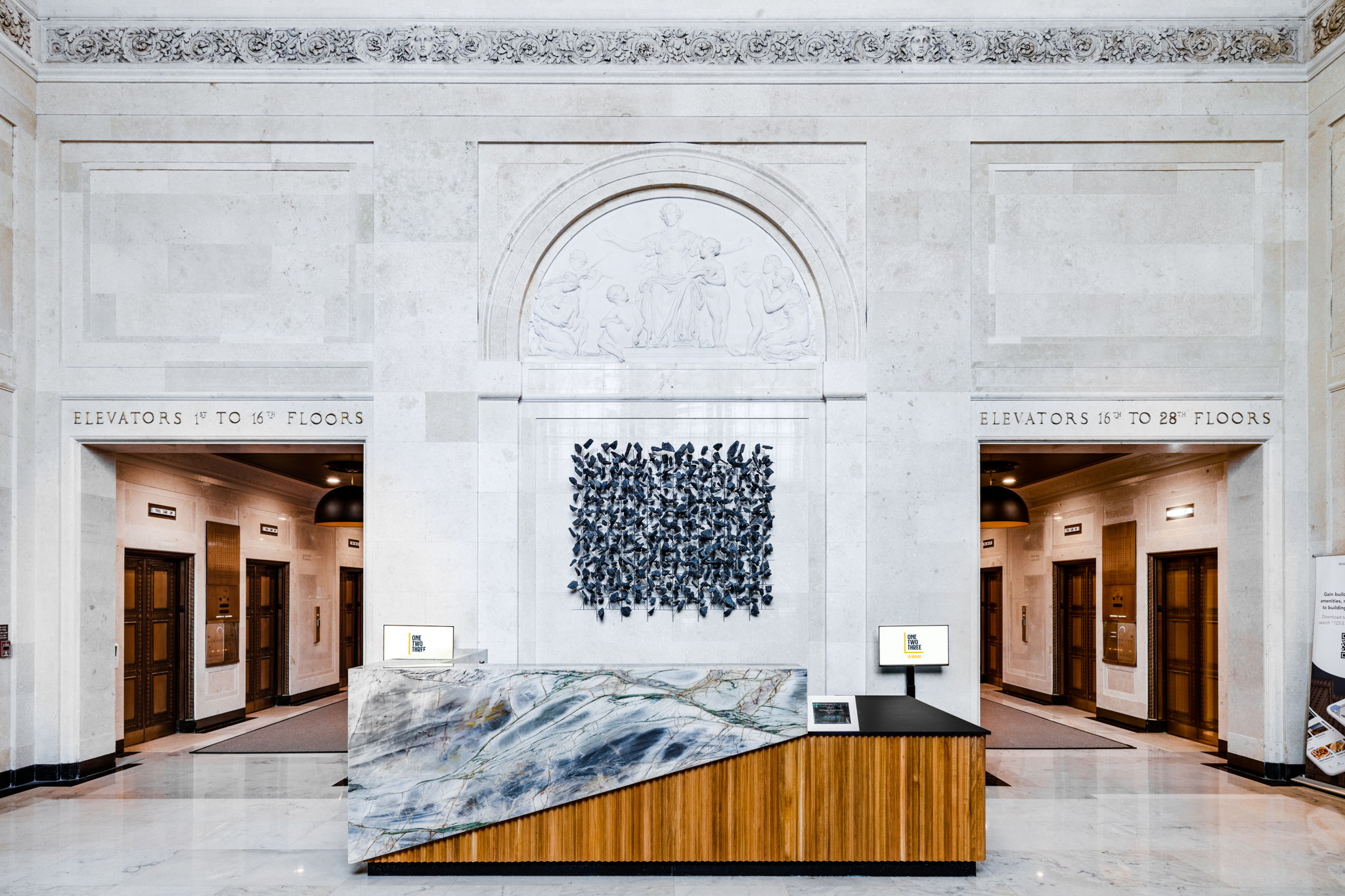
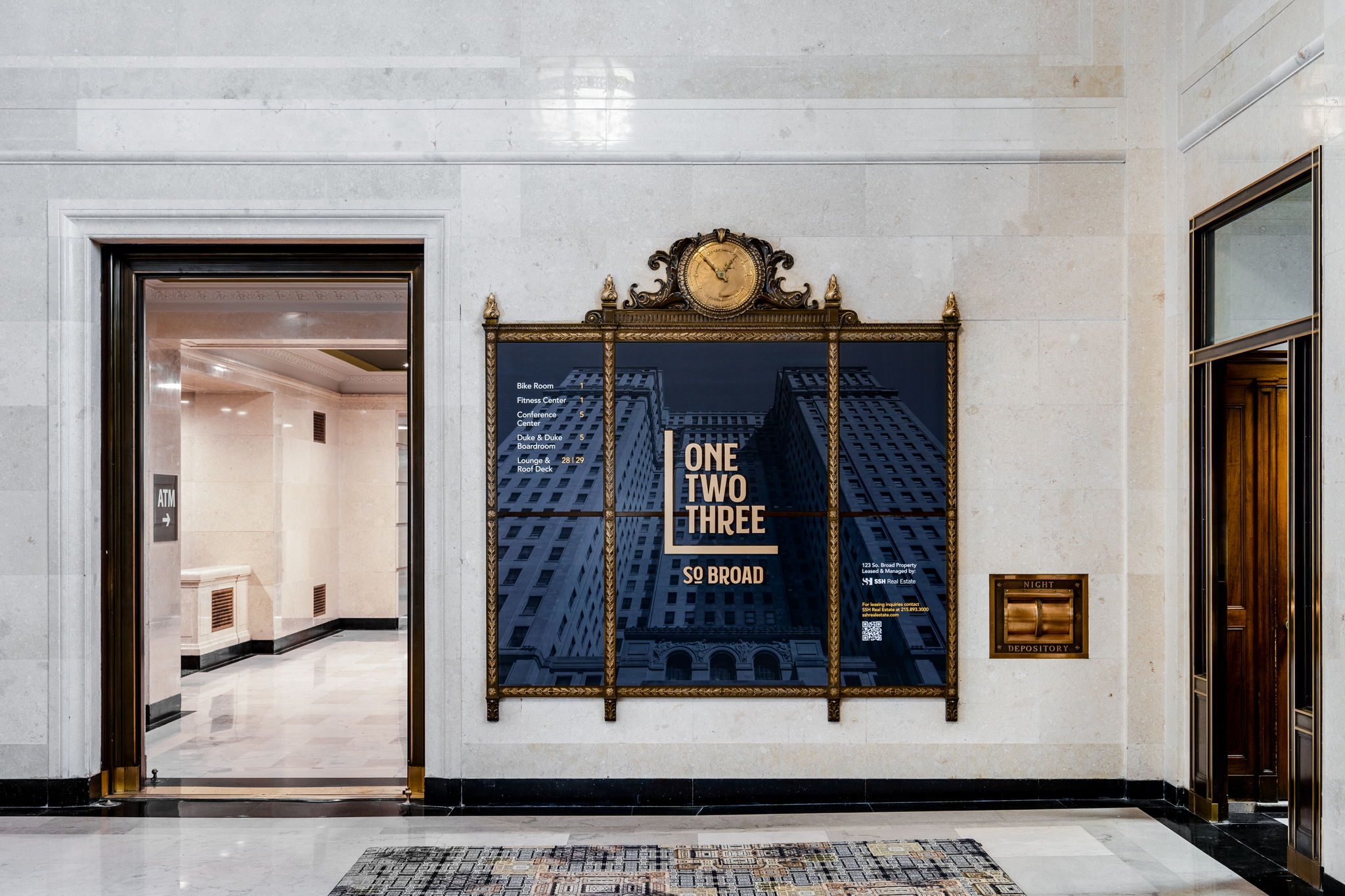
History
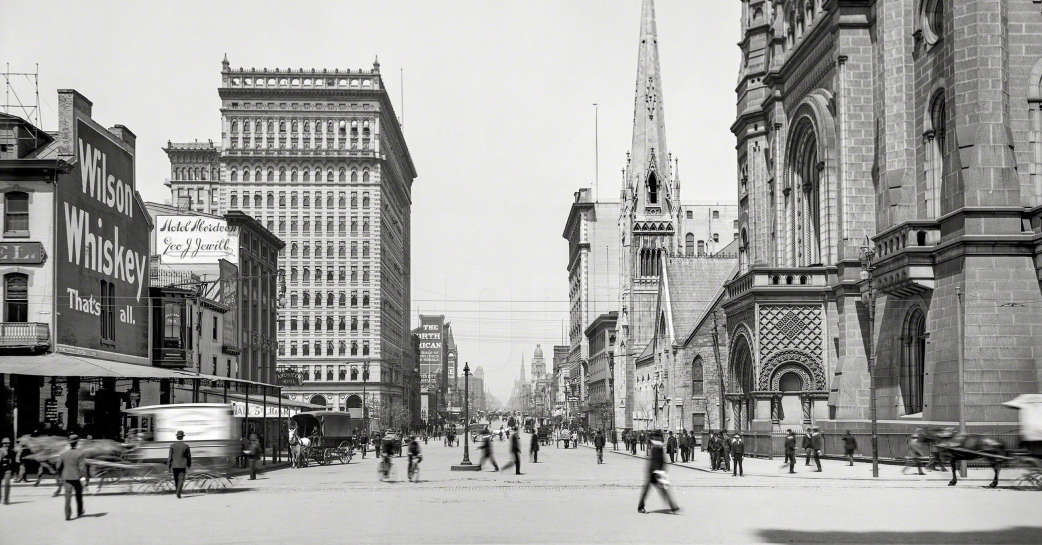
In 1925, architects Edward P. and Grant M. Simon were engaged to design a skyscraper that was at the time, the tallest skyscraper in Philadelphia and the 9th largest office building in the world, to house offices of the newly formed Fidelity-Philadelphia Trust Company. Construction began in 1927, completed a year later in 1928, 1 month ahead of schedule, by builders Irwin & Leighton.
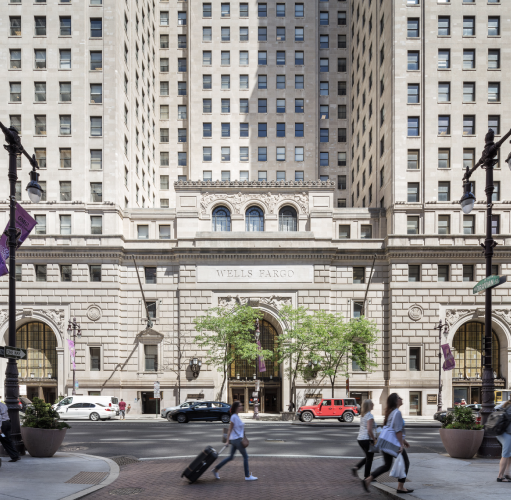
This 405-foot formal and monumental classic, with a limestone and granite façade is a true beauty. Beginning at the fifth floor, the building recesses to a unique H-shape, providing maximum daylight from the large bronze windows. Built prior to the introduction of air-conditioning, the H-shape design allowed for maximum airflow.
Located along the Avenue of the Arts, on Broad Street, the building occupies the entire city block from Walnut to Sansom Streets. The building stands in the former location of the famous Dundas Lippincott House, which was affectionately known as the “Yellow Mansion” and the original Forrest Theater.
All too often today’s glass and concrete structures are architecturally sterile. The original architects and builders of 123 South Broad paid homage to the arts in almost every corner of the building. These features continue even today as a testimony of the skilled craftsman of yesterday. There are a significant number of distinctive art features in bronze, marble, glass and limestone, adding an old-world touch.
The exterior is rich in detail with; nine sets of bronze doors adorning the entrances, each set containing 24 bronze figures depicting the evolution of civilization and commerce. Above the doorways are leaded glass windows, in various shades of amber, framed with a Renaissance-style border. Six sculptured figures sit above the three entrances depicting Industry, Thrift, Abundance and Art.
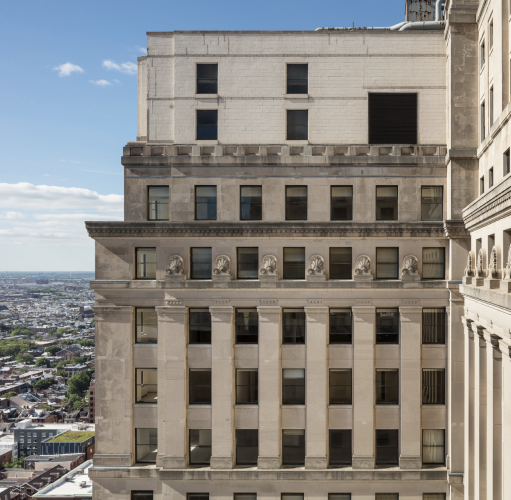

The interior includes a 2½-story banking hall with cream-colored terrazzo marble and a five-tier, 1.25-ton chandelier, that measures 11 feet high by 11 feet wide. One of the largest made in the U.S., it contains 10,000 hand-cut and polished, Austrian and West German crystals. The bank branch also includes a 25 foot tall stained-glass window, with images of Independence Hall, George Washington’s Farewell Address to Congress, William Penn’s treaty with the Indians, the signing of the Declaration of Independence, Benjamin Franklin’s printing office and Betsy Ross displaying the United States flag.
123 South Broad Street’s building front façade was the headquarters of Duke and Duke in the 1983 film “Trading Places” with Dan Akroyd and Eddie Murphy. Multiple scenes were also filmed in the building’s rich interior spaces.

A private eating club known as the Midday Club, once operated on the top floor of the building. It was intended “to provide in the heart of the financial district, removed from the noise and activity of the street, a place where businessmen can dine in a restful atmosphere with their business associates”. Opened in 1929 and closed in 1978, it was the meeting place of political and industry leaders.
First Union Corporation took control of the building in 1995 when it bought Fidelity Bankcorp, a successor to Fidelity-Philadelphia Trust Company. Shortly after, First Union spent millions of dollars improving the facade and interiors and modernizing the mechanical systems. In 2000, First Union, sold the building to an affiliate of American Financial Realty Trust and leased back a significant portion.
During the early 2000s, Wachovia Bank became the building’s largest tenant after merging with First Union Corporation and the building became known as the Wachovia Building and it later became known as the Wells Fargo Building in 2011 after Wells Fargo, acquired Wachovia. Wells Fargo marketed the change by having a stagecoach carry Philadelphia mayor Michael Nutter and others from City Hall to 123 South Broad Street.
Today the 750,000-square foot, 123 South Broad building is owned in a joint venture between Philadelphia based SSH Real Estate and Young Capital with Quilvest Private Equity. The property is managed and leased by SSH Real Estate, who is headquartered in the building. Ownership is committed to preserving the building’s rich and vibrant history, while making it home to a diverse mix of over 50 leading Philadelphia companies.









